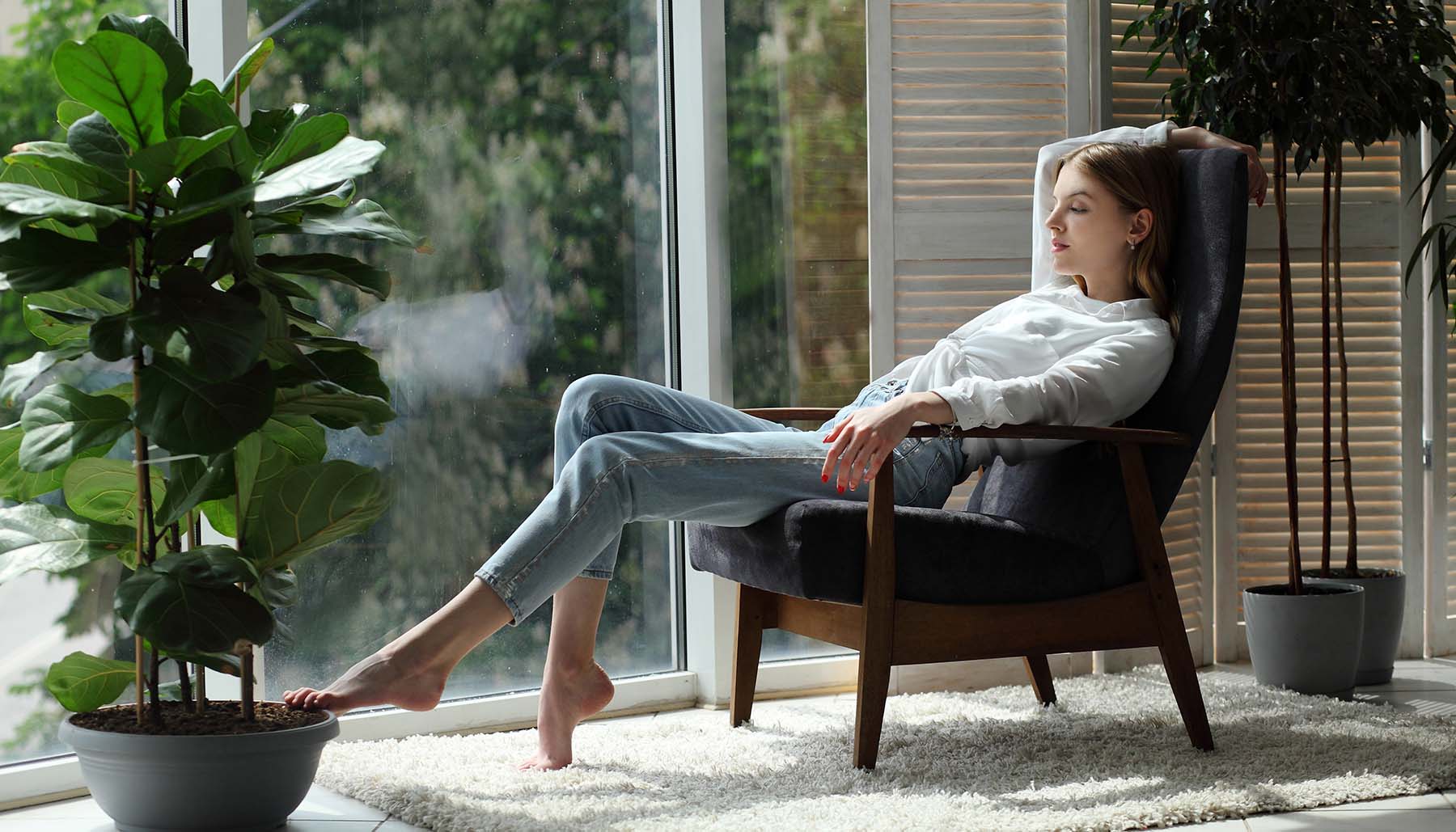During the late 80s, the air-oriented experts at NASA were some of the first to claim that house plants may actually purify indoor air. We’ve since learned so much more that suggests the right plants might make a difference for the better. And they always add a beautiful touch to any home.
Some say you’d actually need hundreds of air-filtering plants around your house to truly remove harmful toxins and pollutants. But many scientists believe a little bit can go a long way. You just need to know which plants work best for your living situation.
Indoor air pollutants have consistently been ranked one of the top five environmental public health risks. This is one of the biggest reasons potentially air purifying plants might be worth bringing home. Here are 14 of the most indoor air-friendly plants for consideration.
Can Indoor Plants Really Lead to Better Breathing?
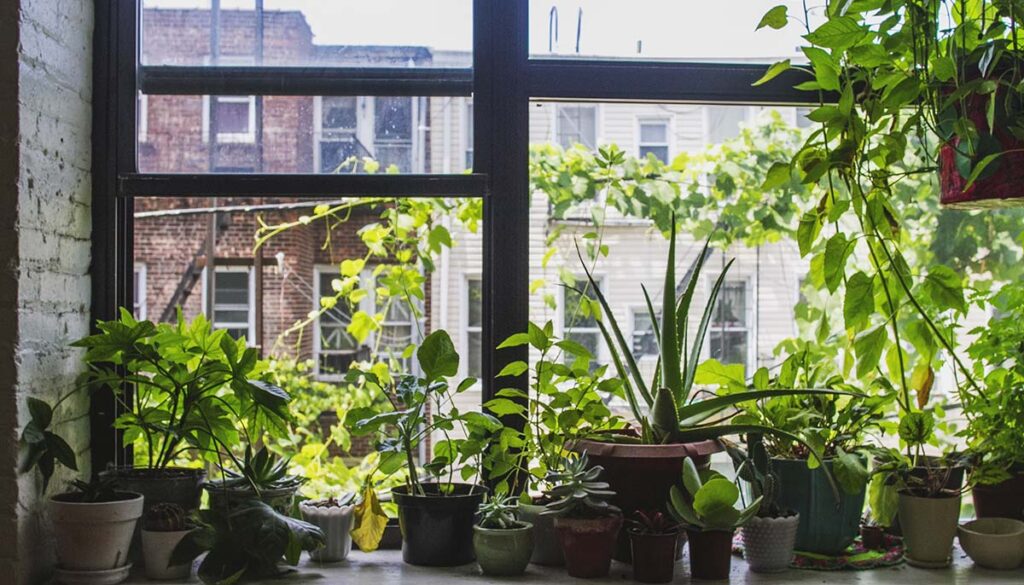
In short, yes. As many of us learned in science class, plants clean the air through the process of photosynthesis. No matter where we are, humans breathe in oxygen and breathe out carbon dioxide. During this process, plants do the opposite. While plants are undeniably beneficial to the air we breathe, it’s not clear how much good a few plants can really do.
As mentioned, you’d probably need a lot of plants to make a major impact on the air you breathe. Per Inverse, “houseplants seem to be able to remove VOCs. But not very much — you’d have to somehow stuff between 10 and 1000 plants per meter squared in a room for them to even be comparable to air exchange from the indoor-outdoor airflow.”
Still, we could always use a little more oxygen indoors. So when in doubt, it might serve you more to aim for quality plants over sheer quantity. These are widely considered the best of the best.
English Ivy
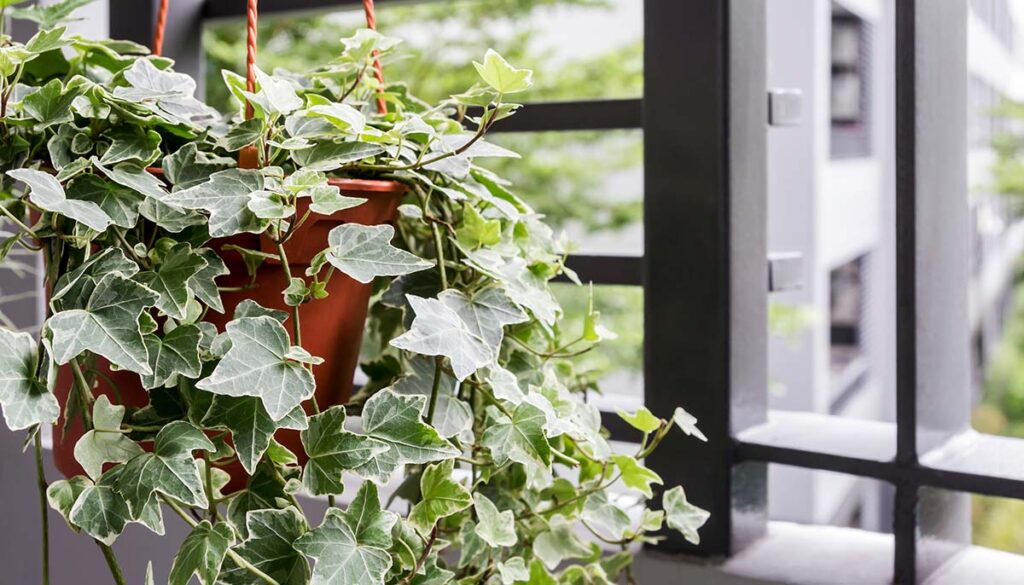
With a little love, low light, and a lot of water regularly, English ivy will be able to thrive in your home. This evergreen climbing vine cleans the air of carbon monoxide, formaldehyde, trichloroethylene, and most mold allergens. And it cleans indoor air of one particularly poisonous chemical better than all the rest.
According to Air Oasis, one NASA study found “English ivy to be the most effective houseplant for cleaning benzene from the air, removing 89.8% of benzene over 24 hours.”
Snake Plant

Sometimes called mother-in-law’s tongue, snake plants are incredibly hardy, easy on the eyes, and quietly packed with health benefits. Not only does this popular house plant cleanse the air of toxins and pollutants like benzene, formaldehyde, trichloroethylene, and xylene, snake plants may even help boost your mental health and promote positive energy.
Indoor, snake plants tend to prefer humid conditions and low light. But even without ideal conditions, they’re easy to care for and very low maintenance. And here’s a fun fact: unlike many house plants, snake plants release oxygen at night.
“It does this by converting carbon dioxide with its wide long leaves into fresh breathable air. In fact, it is best known for producing the highest amount of oxygen among all houseplants. This makes the Snake Plant very friendly for your bedroom,” per Jay Scotts Collection.
Aloe Vera

For centuries, Aloe Vera has been praised for its many medicinal properties. This beautiful plant removes harmful carcinogens like benzene and formaldehyde. Similar to the snake plant, this one actually absorbs carbon dioxide in the day and releases oxygen during the night, making it an ideal bedfellow.
Because it’s technically a succulent, overwatering is much more problematic than underwatering. Find a bright, sunny spot, and give its leaves a little squeeze from time to time. If they’re firm, let your aloe do its thing. If the leaves are soft and squishy, it’s probably time to water it!
Read More: Houseplants That Are Safe to Have Around Your Dogs and Cats
Peace Lily
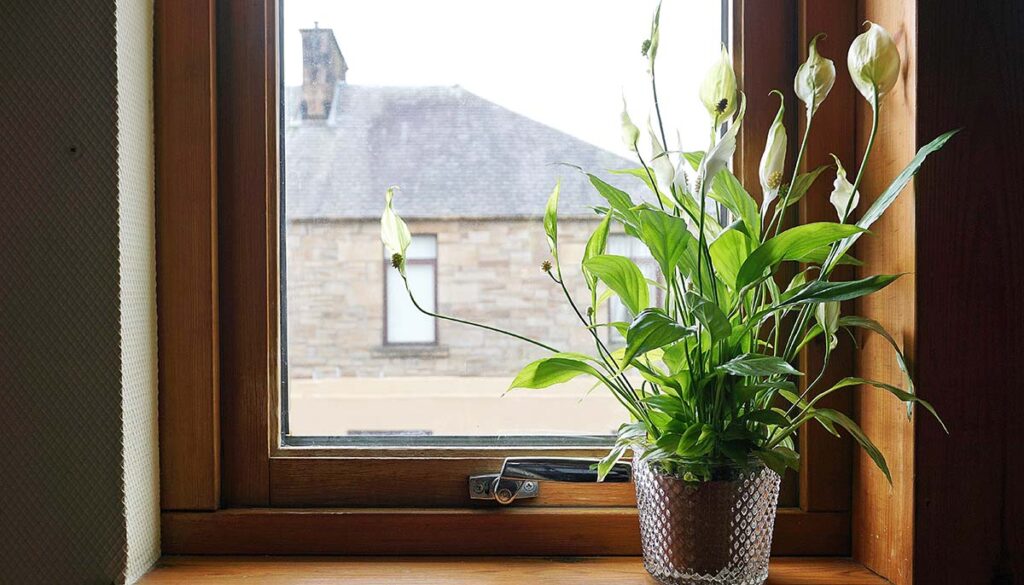
The peace lily claimed NASA’s top spot for removing formaldehyde, benzene, and trichloroethylene. According to the EPA, those are the three most common VOCs in people’s homes. This plant is very forgiving and likes shade and weekly watering in order to bloom.
Peace Lillies are non-fussy, pretty, and may even promote restful sleep. These soft, yet strong flowers are also skilled at removing mold spores and preventing the formation of mildew.
Bamboo Palm
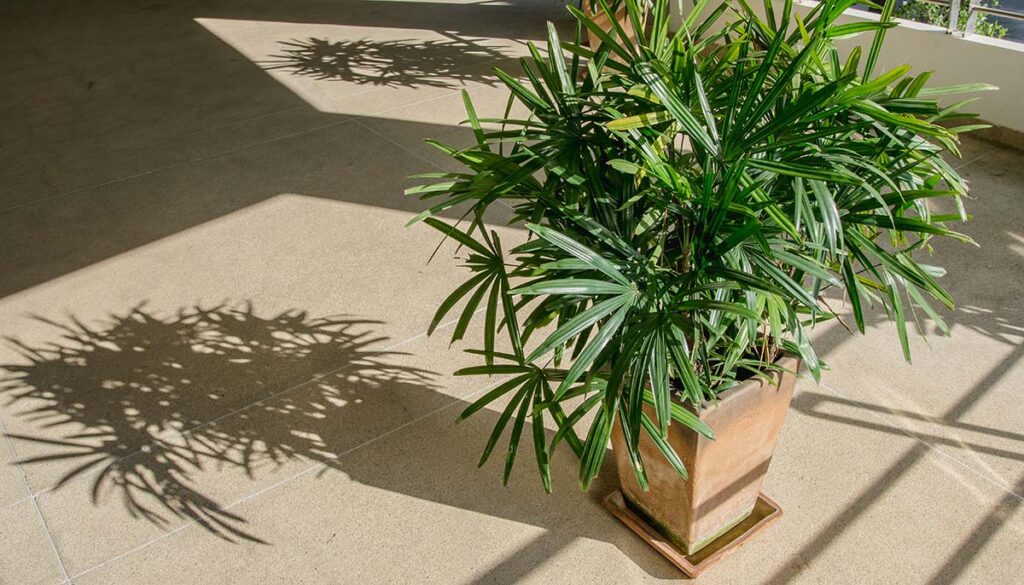
Many cultures believe bamboo palms bring good fortune to your home. While science can’t confirm that claim, we do know it does wonders for the air. Also known as the reed palm, this one lives its best life in the full sun or plenty of bright light.
This pet-friendly plant naturally cleans the air of Benzene, trichloroethylene, formaldehyde, chloroform, and carbon monoxide. And that sounds pretty lucky to me!
Read More: Gardening 101: Basics of Pruning Your Plants
Chrysanthemum

Don’t be fooled by the vibrant beauty of Chrysthanthemums. There’s much more to these popular perennials than their good looks. When they’re potted indoors, this flower’s power can clean the air of formaldehyde, benzene, and xylene. And they’re a great way to add a natural color pop to your home.
If you want to bring mums home that removes most major air pollutants, just be sure to choose the floral variety over the garden variety.
Spider Plant
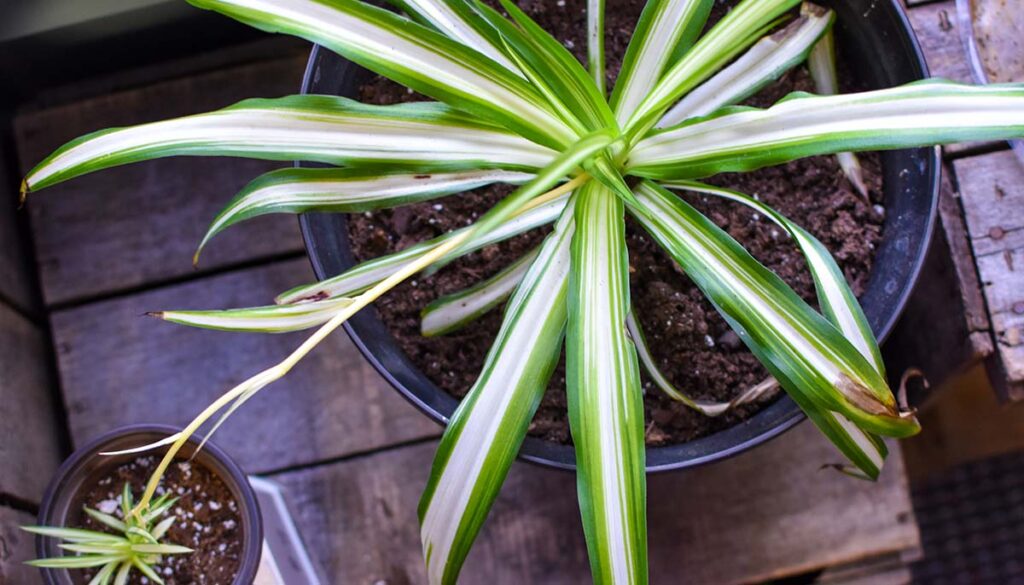
If you usually struggle to keep your plants alive, a spider plant might be a game changer. These resilient, stripey plants are pretty hard to kill. They thrive in cool-to-average temperatures and prefer bright, but indirect sunlight. Most notably, they’re wonderful for indoor air.
Spider plants combat chemicals such as benzene, formaldehyde, carbon monoxide, and xylene. And in the budget-friendly competition, they’re hard to beat. These house plants are easy to propagate, even for someone with a barely green thumb. The flowers they grow evolve into baby spider plants called spiderettes.
Gerbera Daisy
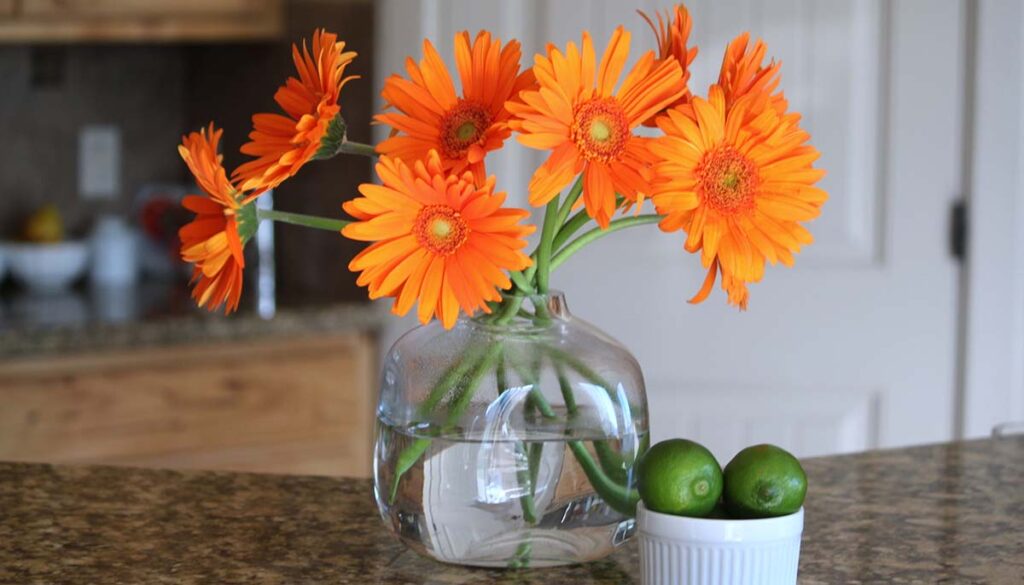
These fabulously colorful flowers help filter out benzene. You’ll frequently find benzene in fabric inks. These plants love lots of sunlight and well-drained soil.
So find a bright, sunshiney spot in your kitchen. Pick out Gerbera daisies in a vase or a pot. Then breathe in the freshness.
Red-Edged Draceana
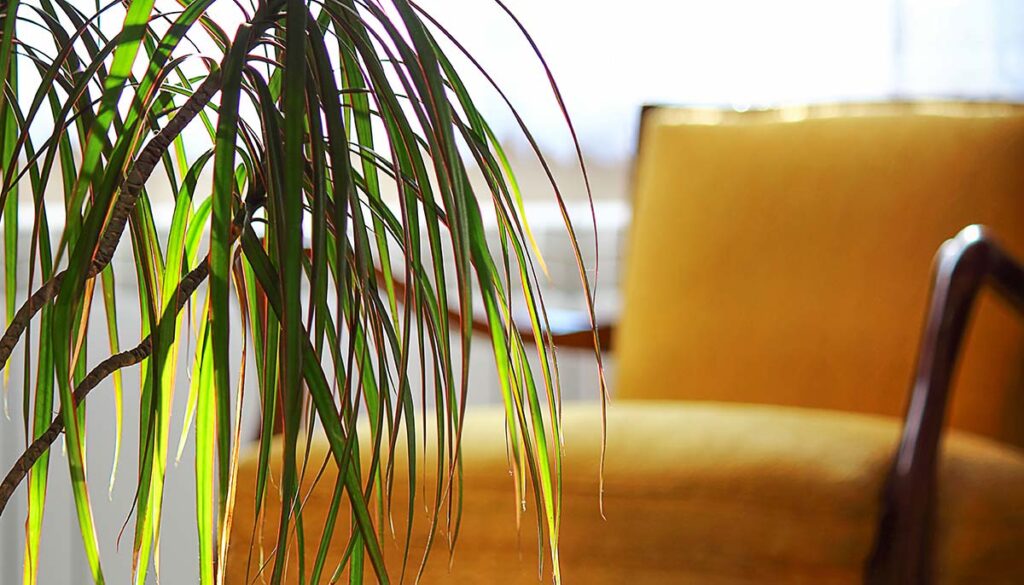
The Red-Edged Draceana is not only a stunning house plant, but it also removes pollutants, toxins, and carcinogens. And there are more than 40 different kinds, all of which can reach the ceiling.
These low light lovers remove Xylene, trichloroethylene, and formaldehyde from their environment. That makes them great for the indoor air you breathe, but be forewarned: they’re extremely toxic to both cats and dogs.
Areca Palm
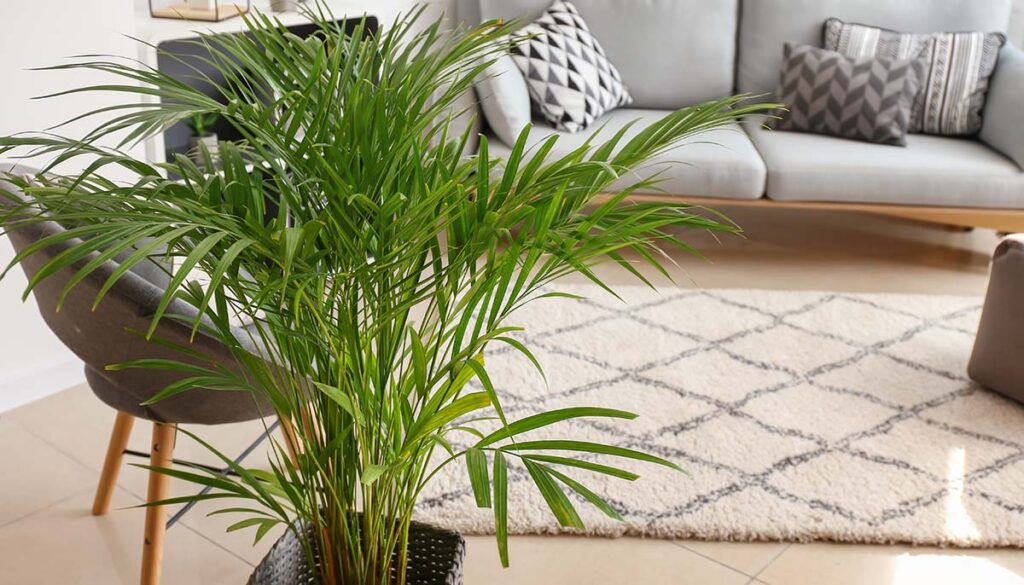
If you have a spot with bright, but shade-filtered light, this Madagascar native might be perfect for your home. This petite, cluster-forming palm cleans the air of Benzene, carbon monoxide, formaldehyde, trichloroethylene, and xylene.
Low maintenance and pet-friendly, this tropical wonder will acclimate anywhere it can get at least six hours of indirect sunlight a day. Adding to its home-style appeal, the Areca Palm has been ranked the most efficient air purifying plant by NASA and the Associated Landscape Contractors of America.
Chinese Evergreen
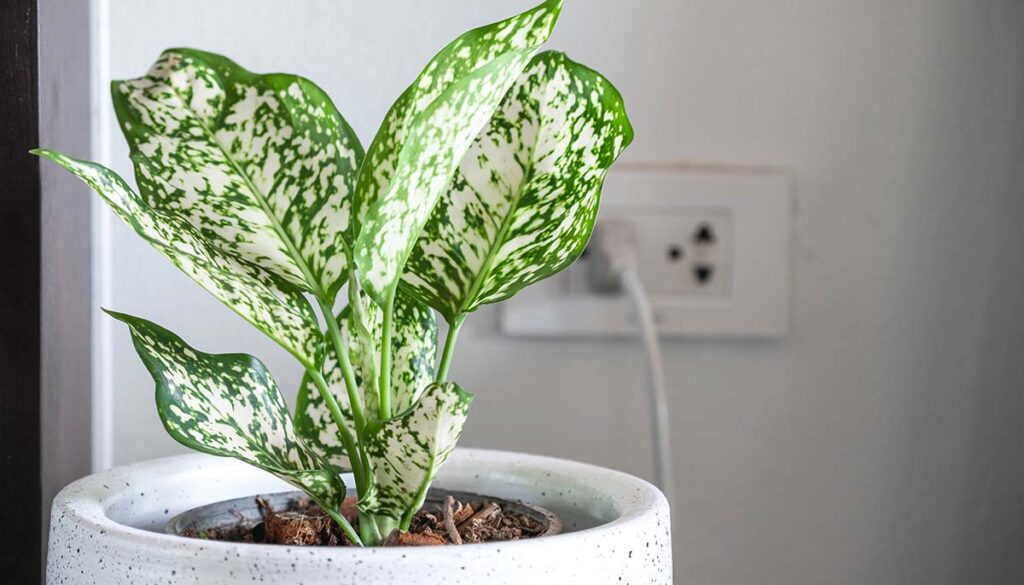
These pretty perennials thrive in the tropical forests of Asia where they produce bright blooms and berries. In your home, they’ll be able to move Benzene, carbon monoxide, formaldehyde, and trichloroethylene from the air.
Chinese Evergreens come in many varieties. Toxin-removing and oxygen-producing, they’re hardy and great for your health. These easy-growing plants are also able to tolerate many growing conditions. Unfortunately, they’re not pet-friendly. So if you have precious pets, find a truly safe spot or skip this one altogether.
Weeping Fig/Ficus
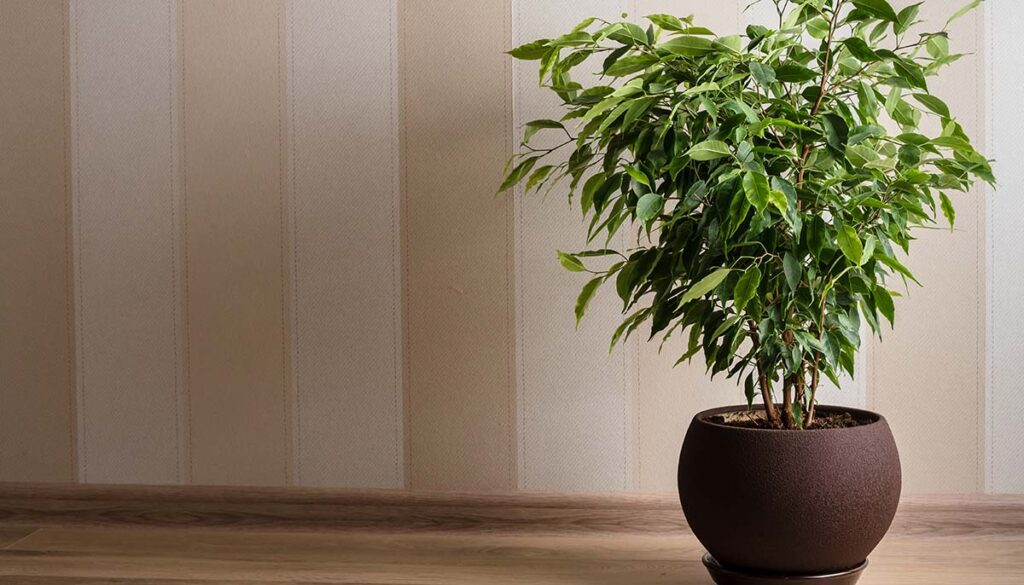
The Ficus family is famously high-maintenance. To live indoors, they require bright indirect light and ample time to let the soil completely dry out between waterings. And they don’t get along with pets.
But if you give it just the right amount of TLC, it can healthily and happily live with you for years. If you’re ready to take care of a fiddle leaf or rubber plant, most ficus varieties will take care of you. They clean the air of Formaldehyde, benzene, and trichloroethylene.
Bird’s Nest Fern
The Bird’s Nest Fern grows atop trees in both Asia and Australia. It can live happily in your home as well. Also known as the hurricane fern, these circling and crinkly-leaved plants primarily purify the indoor air of formaldehyde. If you give them enough growing room, their leaves can sprawl out 2 feet when fully mature.
Whether you place them in bright and airy spaces or semi-shady coves, they don’t require much attention to thrive. Making sure they have enough moisture is key. This makes them a great plant for bathrooms. If you place it in a drier area, just make sure to mist it every other day.
Golden Pothos
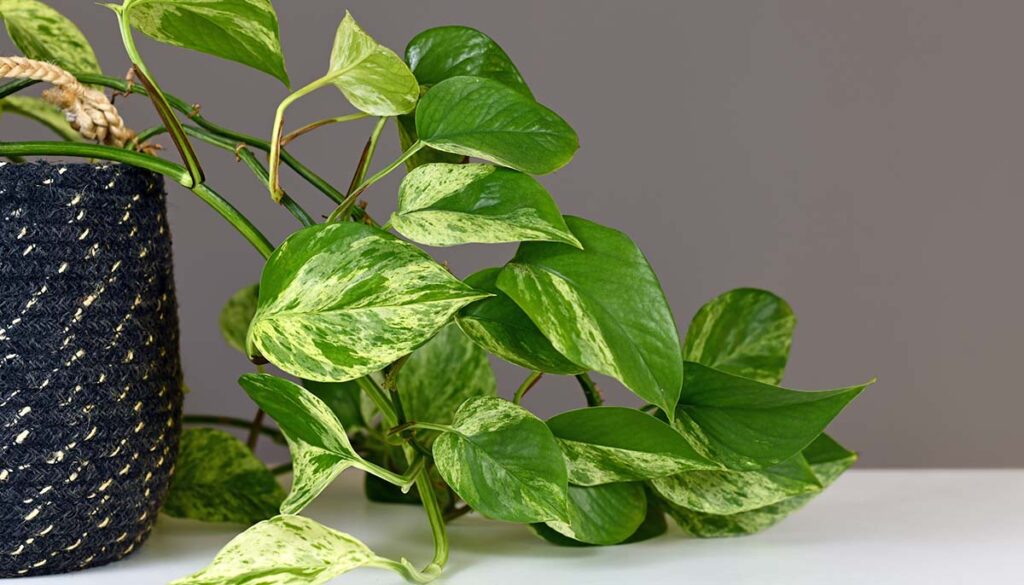
With its twirling vines and heart-shaped leaves, a Golden Pothos will look gorgeous in a hanging basket. They’re easy to take care of and tolerant of just about any light situation.
Pothos is sometimes called “The Devils Ivy,” but it has a particularly purifying touch. This one’s able to remove formaldehyde, xylene, toluene, benzene, and carbon monoxide from indoor air. They’re also easy to propagate in soil or water.
I’ve propagated one Marble Queen in every room of the house. And if you’re looking for a low-maintenance, air-purifying plant that grows like nobody’s business, you should get a Golden Pothos too.
Read More: Houseplants You Shouldn’t Bring Home If You Have Pets


